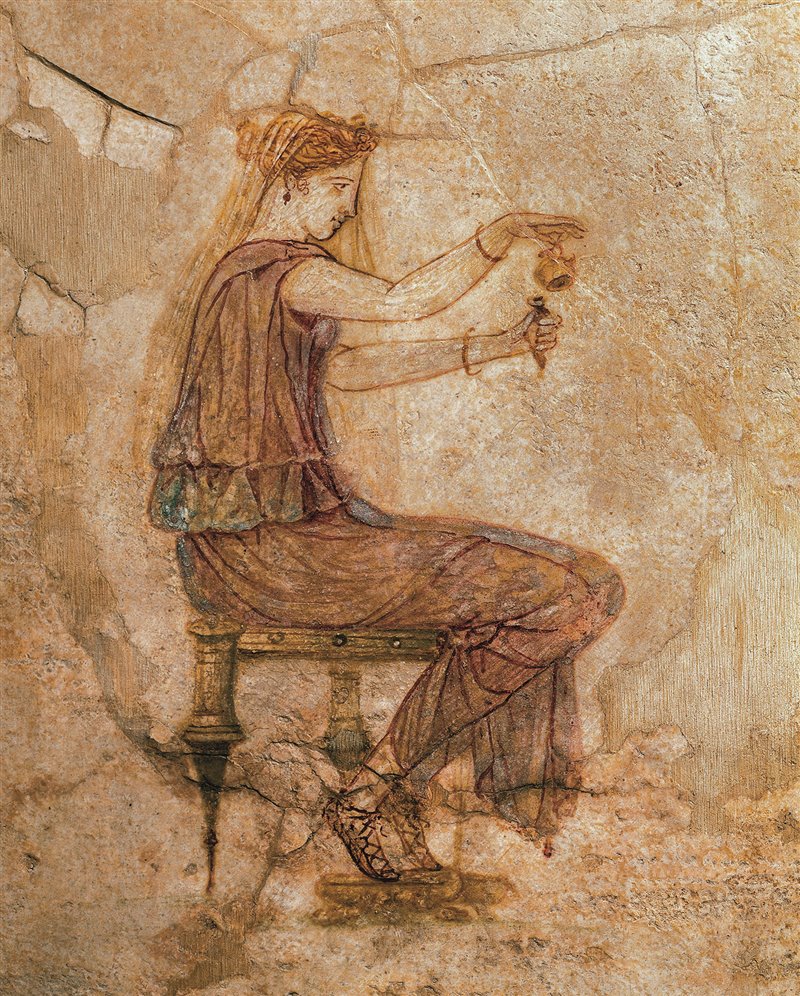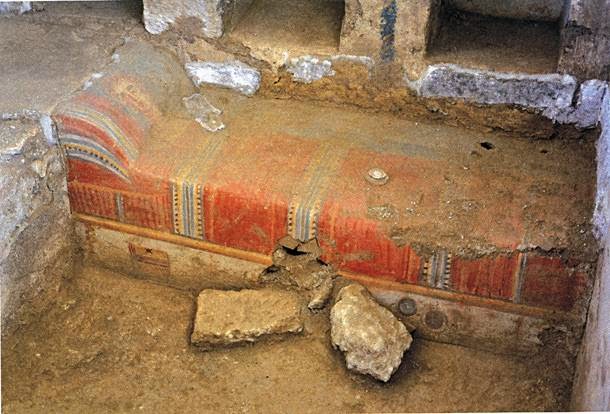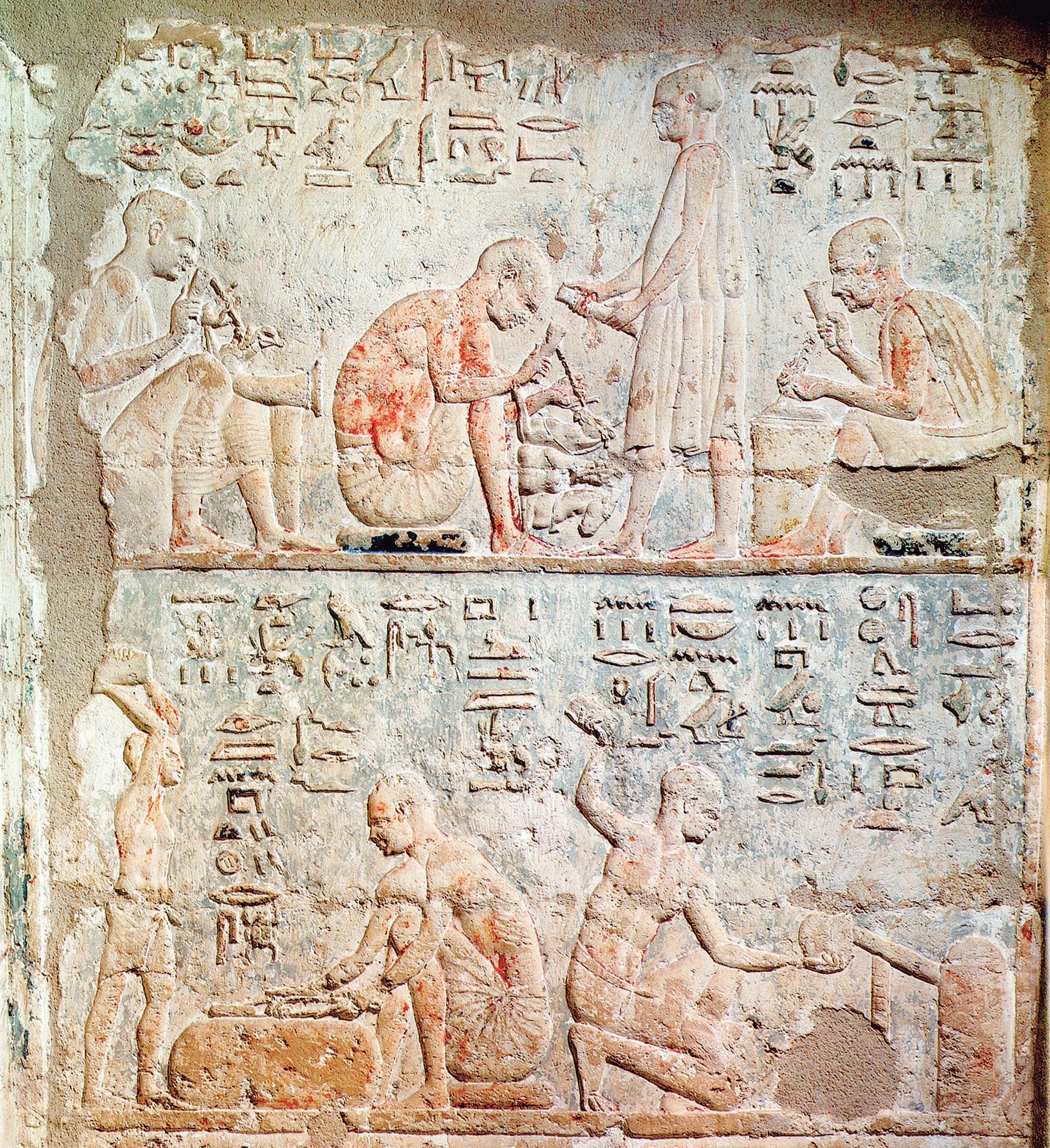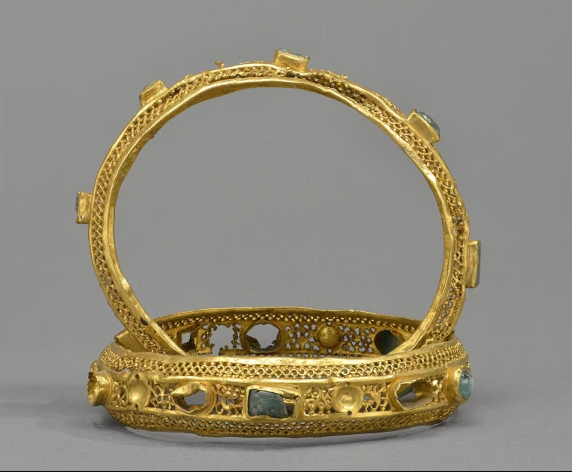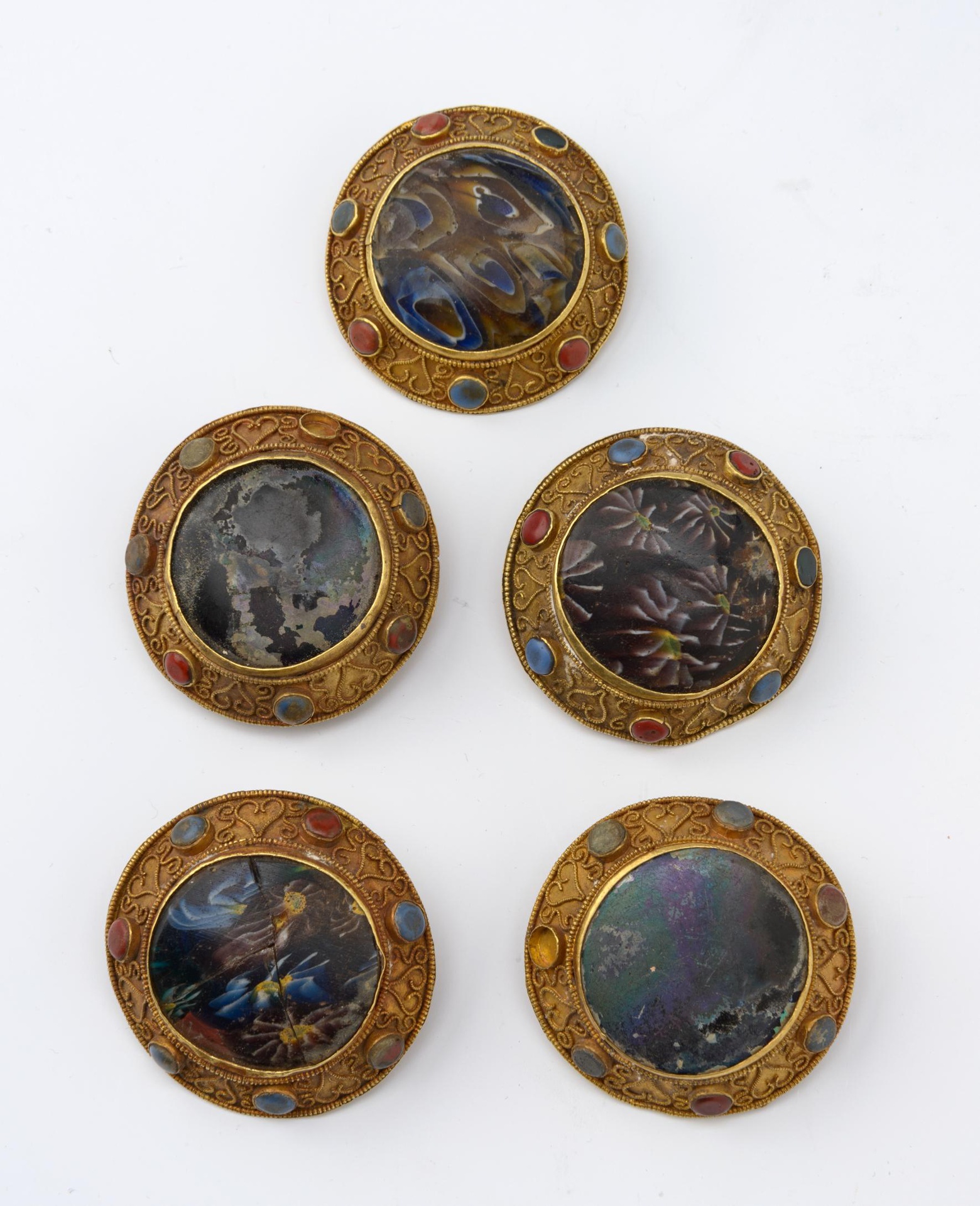Stone inlays have been known since the times of ancient Mesopotamia and Egypt, many examples of sculptures with eyes, eyebrows or jewelry inlayed with gemstones have survived.
It is much more difficult to find examples of such polychrome in architectural elements. Few examples of such decorations have survived, although many single stones have been found, which we can assume were used to decorate buildings.
One such example is a very elegant piece from the temple of the goddess Ishtar at Mari, the ancient city of Syria; dated 2500-2400 BCE. Block is made of limestone and decorated with lapis lazuli, the 4 strand guilloche pattern is formed by a coiled snake.
The earliest known Greek buildings with polychrome are dated to the 7th century BCE, although the floor mosaics made of colorful pebbles from the 9th century BCE are known.
Classical period brings new material, colorful glass. Here’s the drawing by T. L. Donaldson (1836) with a guilloche decoration of columnar capital inlayed with a glass, from the Erechtheion, Athens (406 BCE). According to the Donaldson’ notes “The base was ornamented in the same manner”
- © The Trustees of the British Museum
The Domus Aurea (Latin, “Golden House”) was the residence built by the Emperor Nero in Rome after the great fire in 64 CE. Designed by the architects Severus and Celer and decorated by the painter Fabullus, the palace has interior decorated with frescos in the 4th Pompeian style, and stuccos coated with gold and precious stone.
- Ceiling fresco with lapis lazuli inlay from the Domus Transitoria, part of Domus Aurea

A terracotta relief with a glass inlay depicting Skylla, one of a pair. Possibly a decoration of a funerary klinai (couche). Hellenistic, 4th century BCE.
Sources:
– Polychromy, architectural, Greek and Roman Stephan Zink
– Limestone block from Mari in Louvre pictures
Museum record >> http://cartelfr.louvre.fr/cartelfr/visite?srv=car_not_frame&idNotice=643&langue=fr
– Drawing and a note by T. L. Donaldson in the British Museum
– The Domus Aurea:
https://en.wikipedia.org/wiki/Domus_Aurea
https://parcocolosseo.it/area/domus-aurea/
– THE GROTESQUE CORNERS OF THE DOMUS AUREA
– The Domus Aurea: From the Ashes of Rome, Nero’s ‘Golden House’, Mariano Akerman article
– Ceiling fresco from the Domus Transitoria picture
– Plates from Nero’s golden house (Domus Aurea) from 1776, by Vincenzo Brenna and Franciszek Smuglewicz – original artwork, Marco Carloni – engraving National Museum Warsaw
– https://www.thegeographicalcure.com/post/complete-guide-to-the-palatine-hill-in-rome
– Terracotta plaque with Skylla, The Met Inv. no. 1998.210.1, .2
See also my post Metal elements with gemstones, decorated frames









